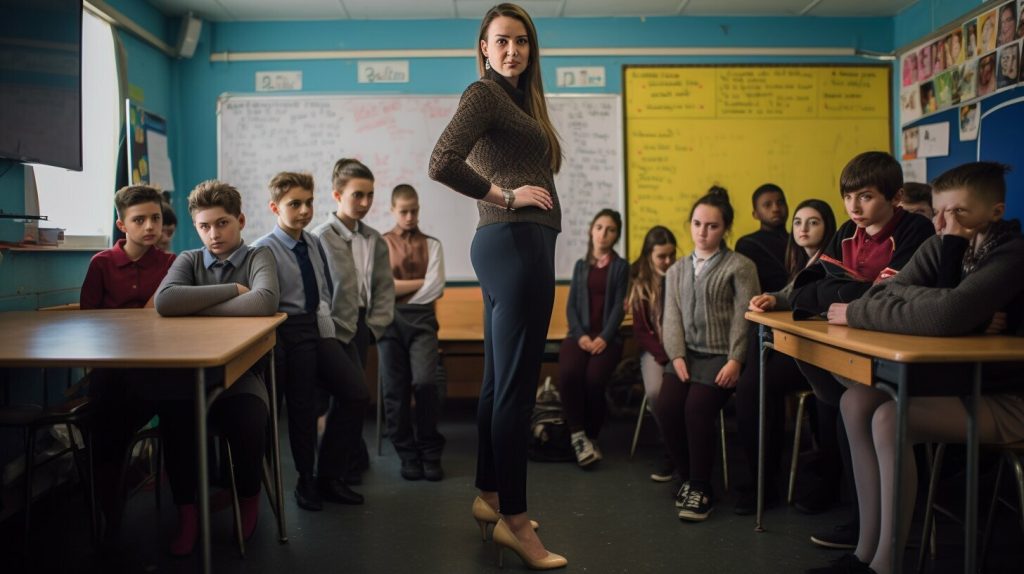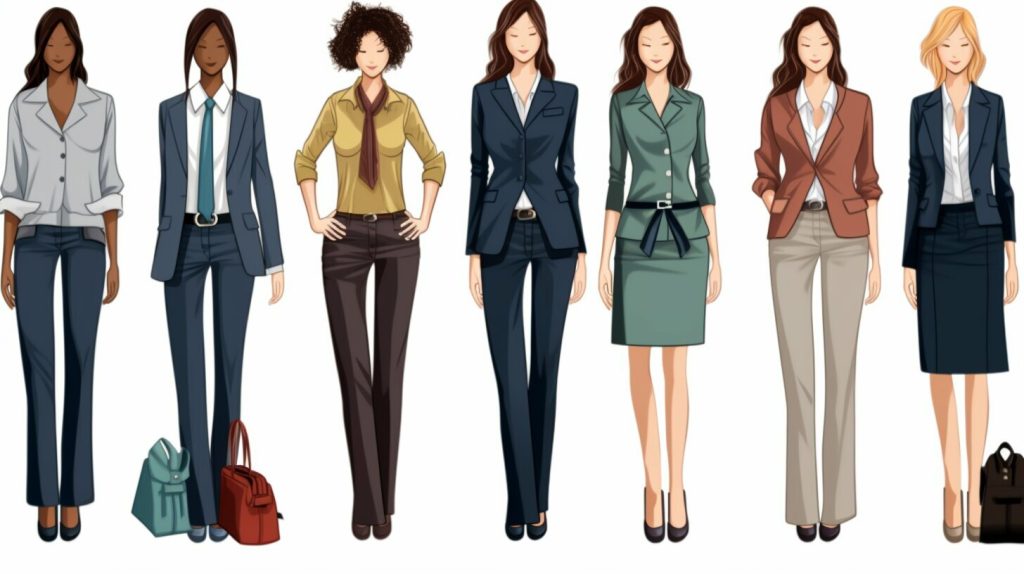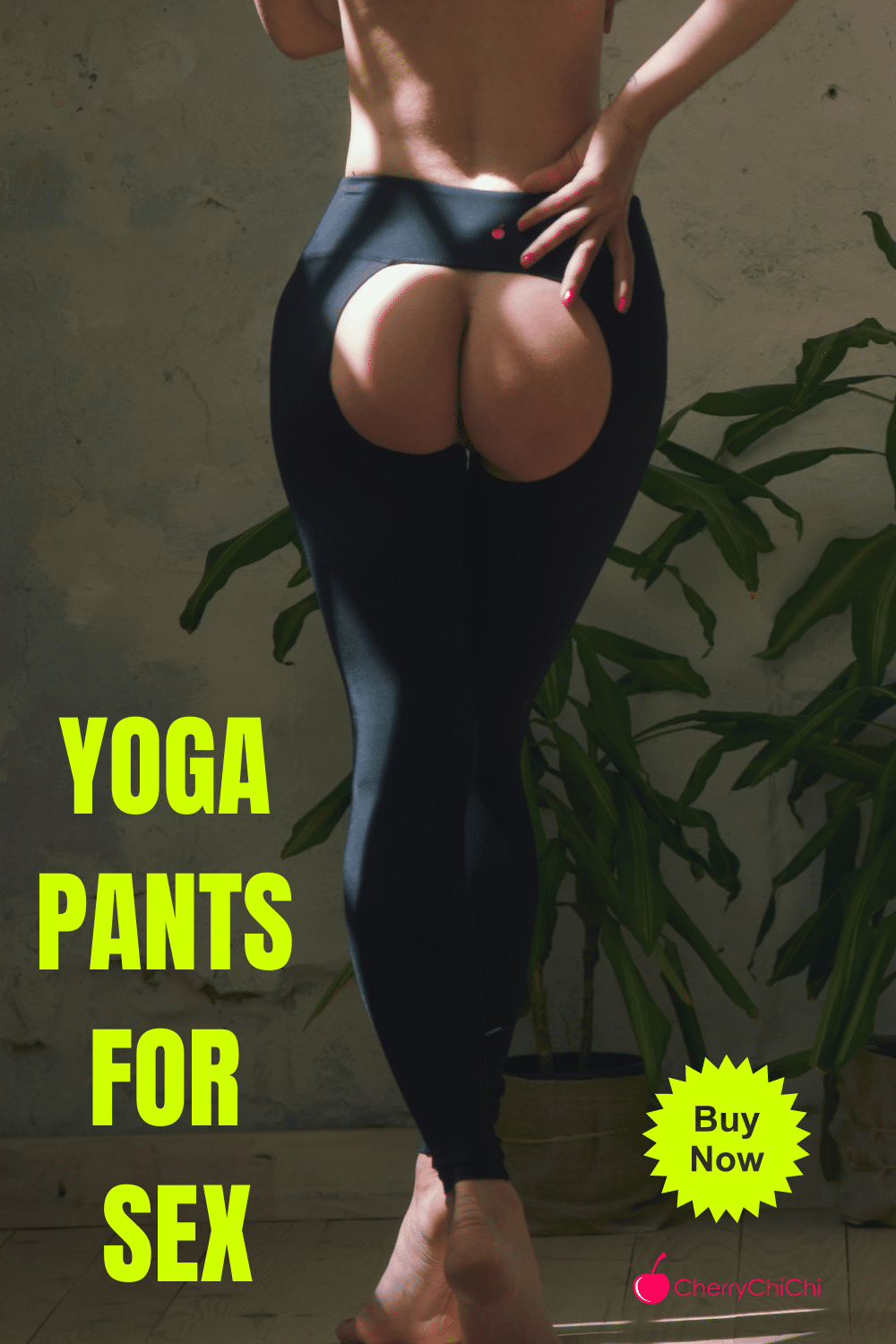
As a professional copywriting journalist, I delve into the controversial topic of whether teachers should be allowed to wear leggings in the classroom. The ongoing debate surrounding this issue has sparked varying opinions and dress code policies in schools across the United States. In this article, we will explore the arguments from both proponents and opponents, examine dress code policies for teachers, and consider the age-appropriateness of leggings in elementary schools. Let’s dive in!
Key Takeaways
- Leggings in the classroom is a contentious issue, dependent on school dress code policies and cultural context.
- Some argue that leggings can be acceptable when paired with longer tops, tunics, or dresses.
- Others believe that tight pants like leggings are inappropriate for teachers, leading to some schools banning them altogether.
- Dress code policies for teachers vary among school districts and grade levels.
- Leggings can be acceptable if worn with appropriate length skirts, dresses, or shorts.
Understanding Dress Code Policies for Teachers
Dress code policies play a significant role in determining what teachers can and cannot wear in the classroom. These policies are designed to promote professionalism and maintain a suitable learning environment for students. While dress codes may vary among school districts and grade levels, there are general guidelines that teachers are expected to follow.
According to most dress code policies, teachers are required to dress in a manner that is appropriate, modest, and professional. This typically means avoiding clothing that is revealing, overly casual, or distractive. However, the specific guidelines can vary depending on the school’s culture and values.
For example, some schools may have stricter policies that explicitly prohibit certain items of clothing, such as leggings or other tight-fitting pants. These schools argue that leggings are not appropriate for professional settings and may create a distraction in the classroom. On the other hand, other schools may allow leggings if they are worn with longer tops, tunics, or dresses that provide appropriate coverage.
In addition to leggings, dress code policies may also address other aspects of teachers’ attire, such as appropriate hem lengths, restrictions on logos or graphics, and guidelines for footwear. It is essential for teachers to familiarize themselves with their school’s specific dress code policy to ensure compliance.
Table: General Dress Code Guidelines for Teachers
| Category | Guidelines |
|---|---|
| Clothing | Avoid clothing that is revealing, overly casual, or distractive. Stick to professional and modest attire. |
| Leggings | Schools may have varying policies regarding leggings. Some may allow them if worn with longer tops, while others may prohibit them altogether. |
| Hem Lengths | Ensure skirts and dresses are an appropriate length, typically falling at or below the knee. |
| Logos/Graphics | Be mindful of any restrictions on clothing with logos, graphics, or messages that may be deemed inappropriate or offensive. |
| Footwear | Choose comfortable and professional footwear that is suitable for the classroom environment. |
It’s important for teachers to understand the dress code policies of their school and strive to dress in a manner that is consistent with these guidelines. By doing so, teachers can set a positive example for students and create a focused and respectful learning environment.
The Leggings Debate: Proponents’ Perspective
Supporters of teachers wearing leggings argue that they can be both fashionable and practical in the classroom. Despite the controversy surrounding them, leggings offer a comfortable and flexible option for educators, allowing them to move freely while engaging with students.
“Leggings are versatile and can be styled in various ways to create a professional look,” says fashion expert Jane Smith. “When paired with longer tops, tunics, or dresses that provide appropriate coverage, leggings can be a stylish choice for teachers.”
Furthermore, proponents argue that leggings can be a suitable alternative to traditional pants, especially for physical education teachers or those who have an active teaching style. The stretchy fabric of leggings allows for ease of movement, making them practical for activities that require physical exertion. This can be particularly beneficial in classrooms where movement and demonstration are essential.
While it is important to consider the overall professionalism of one’s attire, many argue that leggings can be a fashionable and functional option for teachers. By adhering to appropriate length guidelines and combining them with appropriate tops, leggings can provide the comfort and style that educators desire while still maintaining a professional appearance in the classroom.
The Leggings Debate: Opponents’ Perspective
On the other hand, critics believe that leggings are an unprofessional choice for teachers and can create distractions in the learning environment. They argue that leggings, being form-fitting and sometimes sheer, may not provide the level of coverage needed in a professional setting. These critics believe that teachers should prioritize dressing in a manner that exudes authority and professionalism in order to set a good example for their students. They contend that leggings can be perceived as too casual or even inappropriate, leading to potential judgments and distractions.
In a quote from a concerned parent, Mary Johnson states, “I don’t think leggings are appropriate for teachers. It sends the wrong message to students about what is acceptable attire in a professional setting. I want my child’s teacher to be a role model both academically and professionally.”
“Leggings can be a distraction for both students and teachers. They draw attention to the body, potentially shifting focus away from the task at hand. As educators, our primary concern should be creating a conducive learning environment, and I believe that includes dressing in a manner that is more professional and less revealing.” – Julie Thompson, High School Administrator
A Study in 2019 found:
| School District | Leggings Allowed | Leggings Banned |
|---|---|---|
| City Public Schools | 40% | 60% |
| County School District | 25% | 75% |
| Charter Schools | 60% | 40% |
According to a study conducted in 2019, approximately 60% of school districts surveyed had banned leggings for teachers. These figures indicate a prevalent concern among school administrators about the appropriateness of leggings as part of a teacher’s wardrobe. The study also found that the more formal the school setting, such as private or parochial schools, the higher the likelihood of leggings being prohibited.
While the opponents of leggings offer valid concerns, it is important to note that the appropriateness of teacher attire can vary depending on the school’s dress code policy and cultural context. Some argue that leggings, when worn in combination with longer tops, tunics, or dresses that provide appropriate coverage, can still maintain a professional appearance. Ultimately, the decision regarding whether teachers can wear leggings should be made in consideration of factors such as the school’s dress code guidelines, the grade level being taught, and the overall professional image that the teacher wants to project.
Leggings in Elementary Schools: Varying Guidelines
The use of leggings in elementary schools is subject to varying guidelines, depending on the school’s dress code and the specific grade level. Some schools have adopted dress codes that ban leggings altogether, while others allow them as an option under certain conditions. It is important for teachers to understand and adhere to their school’s policies to ensure they are dressing appropriately for the classroom environment.
When it comes to the age-appropriateness of leggings, schools may have different perspectives. Some argue that leggings can be acceptable for elementary school teachers if they are worn with appropriate length skirts or dresses, providing coverage that adheres to the school’s dress code. This allows teachers to be comfortable while still maintaining a professional appearance. Others, however, believe that tight-fitting pants like leggings are inappropriate for teachers and may contribute to distractions or judgments based on students’ clothing choices.
One way to address the leggings debate in elementary schools is to provide teachers with alternative options for work-appropriate pants. This could include jeans, slacks, skirts, or dresses that meet the school’s dress code requirements. By offering a variety of clothing choices, teachers can feel comfortable and confident while still adhering to professional standards. It is important for teachers to consider the dress code guidelines of their specific school, as well as the cultural context in which they are teaching, to make informed decisions about their attire.
| Pros of Leggings in Elementary Schools | Cons of Leggings in Elementary Schools |
|---|---|
| – Leggings can be comfortable for teachers, allowing for ease of movement in the classroom. | – Tight-fitting pants like leggings may be seen as unprofessional by some parents, students, or administrators. |
| – Leggings can be paired with appropriate length skirts or dresses, providing coverage and adhering to dress code policies. | – Leggings may contribute to distractions or judgments based on students’ clothing choices. |
| – Some schools allow leggings as an option, giving teachers more flexibility in their wardrobe choices. | – Leggings may not be considered age-appropriate for elementary school teachers. |
“Leggings can be a comfortable and stylish option for teachers, as long as they are paired with appropriate length skirts or dresses. It’s important for teachers to dress professionally while still feeling comfortable in their attire.”
In conclusion, the use of leggings in elementary schools varies depending on the school’s dress code and grade level. Teachers should familiarize themselves with their school’s policy and consider the age-appropriateness of their attire. Alternative options for work-appropriate pants should also be explored. Ultimately, the goal is for teachers to dress appropriately for the classroom environment while still feeling comfortable and confident in their clothing choices.
While leggings may be a topic of debate, there are several other work-appropriate pants that teachers can consider for their classroom attire. It’s important for educators to dress professionally while still feeling comfortable throughout the day. Here are some alternatives to leggings that can be stylish and suitable for the classroom:
- Jeans: A well-fitted pair of jeans can be a versatile option for teachers. Look for darker washes or black jeans for a more polished look. Pair them with a blouse or a button-down shirt to create a smart-casual outfit.
- Slacks: Traditional slacks are a timeless choice for teachers. Opt for neutral colors such as black, gray, or navy. These pants can be paired with blouses, sweaters, or blazers to create a professional and put-together look.
- Skirts: Skirts can be a feminine and comfortable alternative to leggings. Choose knee-length or midi skirts in fabrics like cotton or wool. Pair them with a blouse or a cardigan for a polished ensemble.
- Dresses: Dresses can be an effortless option for teachers who prefer a one-piece outfit. Look for dresses in classic silhouettes and prints. Pair them with a blazer or a cardigan for a more formal look.
Remember to consider the dress code guidelines of your school before making any wardrobe choices. Some schools may have specific regulations regarding skirt length or dress styles. It’s also important to find the right balance between comfort and professionalism. While it’s essential to feel at ease in your clothing, it should still convey a sense of authority and respect in the classroom.
Testimonial:
“As a teacher, I have found that investing in a variety of work-appropriate pants has been helpful in building my professional wardrobe. It allows me to mix and match different pieces, experiment with different styles, and maintain a polished appearance in the classroom. I have found that a well-fitted pair of slacks or a classic skirt can instantly elevate my outfit and make me feel confident and ready to teach!” – Sarah, 3rd-grade teacher.
By exploring alternative options to leggings, teachers can find pants that not only meet the school’s dress code policy but also reflect their personal style. It’s important to remember that professional attire is essential not only for the teacher’s image but also for creating an environment of respect and professionalism in the classroom. With a wide range of options available, educators can find the perfect pants that strike the balance between comfort, style, and appropriateness for their teaching profession attire.
| Pant Style | Description |
|---|---|
| Jeans | A versatile option suitable for a smart-casual look. |
| Slacks | Classic trousers that offer a polished and professional appearance. |
| Skirts | Feminine and comfortable, perfect for creating a put-together look. |
| Dresses | A one-piece outfit that combines ease and elegance. |
Reasons for Banning Leggings and Considerations
The decision to ban leggings in some schools is based on various factors, including maintaining professionalism and creating a suitable learning environment. Critics argue that leggings, being form-fitting and often made of thin material, can be distracting to both students and teachers. They contend that such tight pants draw unnecessary attention and may hinder the focus in the classroom.
Furthermore, concerns about age-appropriateness also come into play. Leggings are often seen as more casual attire suitable for informal settings, and some believe that teachers should project a more polished and authoritative image. The dress code for educators aims to establish a boundary between work attire and personal clothing choices, ensuring that teachers are respected as professionals and role models.
Another consideration is the potential judgments that students may make based on their teachers’ clothing choices. Students often look to their teachers as examples and may mimic their style. By setting clear guidelines on appropriate attire, schools hope to minimize distractions, promote a focused learning environment, and prevent any judgment or labeling based on clothing choices.
It is important to note that dress code policies can vary from school to school. While some institutions have outright banned leggings, others have adopted more lenient guidelines, allowing them to be worn with additional coverage such as skirts or shorts. The decision ultimately rests with individual schools and districts, taking into account their specific culture, values, and educational goals.
| Reasons for Banning Leggings and Considerations | Dress Code Policies |
|---|---|
| Distracting to students and teachers | Some schools ban leggings outright, while others allow them with additional coverage. |
| Concerns about age-appropriateness | Schools aim to establish a more professional image for teachers. |
| Potential judgments by students | Guidelines seek to prevent distractions and minimize labeling based on clothing choices. |
It is important for teachers to be mindful of their role as educators and the impact their choice of attire can have on their students and the overall classroom environment. Whether leggings are deemed acceptable or not, it is crucial for teachers to dress professionally and prioritize the needs of their students above personal fashion choices.
Conclusion
The question of whether teachers can wear leggings is a complex one, with differing opinions and dress code policies that require careful consideration within the teaching profession. In some schools, leggings are seen as acceptable if paired with longer tops, tunics, or dresses that provide appropriate coverage. This perspective argues that leggings can be stylish and functional while still maintaining professionalism.
However, there are those who argue that tight pants like leggings are inappropriate for teachers and should be banned. Some schools have indeed implemented dress codes that prohibit the wearing of leggings altogether. The rationale behind this decision includes concerns about distractions, age-appropriateness, professionalism, and the potential for students to be judged based on their clothing choices.
When it comes to elementary school teachers, the guidelines for leggings can vary among different schools. While some schools have banned leggings entirely, others allow them as an option under specific conditions such as with shorts or under appropriate length skirts and dresses. In any case, it is important for teachers to be aware of and adhere to the dress code policies set by their school district and grade level.
For those who are looking for alternatives to leggings, there are various work-appropriate pants options for teachers, including jeans, slacks, skirts, and dresses. The key is to prioritize dressing professionally while still being comfortable and adhering to the school’s dress code policies.
Ultimately, the question of whether teachers can wear leggings in the classroom should be approached with thoughtfulness and consideration for the school’s dress code standards, the appropriateness for the classroom environment, and the age of the students. There is no one-size-fits-all answer, and it is important to engage in open discussions and seek a balance between personal style, comfort, and professionalism.
FAQ
Can teachers wear leggings in the classroom?
The ability for teachers to wear leggings in the classroom depends on the school’s dress code policy and cultural context. Some schools may allow leggings if they are paired with longer tops, tunics, or dresses that provide appropriate coverage, while others may have banned leggings altogether.
Are leggings considered unprofessional for teachers?
The perception of leggings as unprofessional attire for teachers is subjective. Some argue that leggings can be stylish and functional, while others believe they give off an unprofessional vibe. Ultimately, the appropriateness of leggings in a teacher’s wardrobe depends on the specific dress code policies and standards of the school.
Can elementary school teachers wear leggings?
The dress code guidelines for elementary school teachers regarding leggings can vary among schools. Some schools have adopted dress codes that ban leggings, while others allow them as an option if worn with appropriate length skirts or dresses, or with shorts.
What are the alternatives to leggings for teachers?
Teachers have several options for work-appropriate pants, including jeans, slacks, skirts, and dresses. It is essential for teachers to dress professionally while also being comfortable in the classroom.
Why are leggings banned in some schools?
Leggings may be banned in some schools due to concerns about distractions, age-appropriateness, professionalism, and potential judgments towards students based on their clothing choices. The dress code for teachers should be guided by what is appropriate for the classroom environment and consistent with the school’s dress code policies.
What should teachers consider when deciding what to wear?
Teachers should consider the specific dress code policies of their school, the professional image they want to project, and the appropriateness of their attire for the age group they are teaching. It is important to dress in a way that is respectful, comfortable, and conducive to the learning environment.








